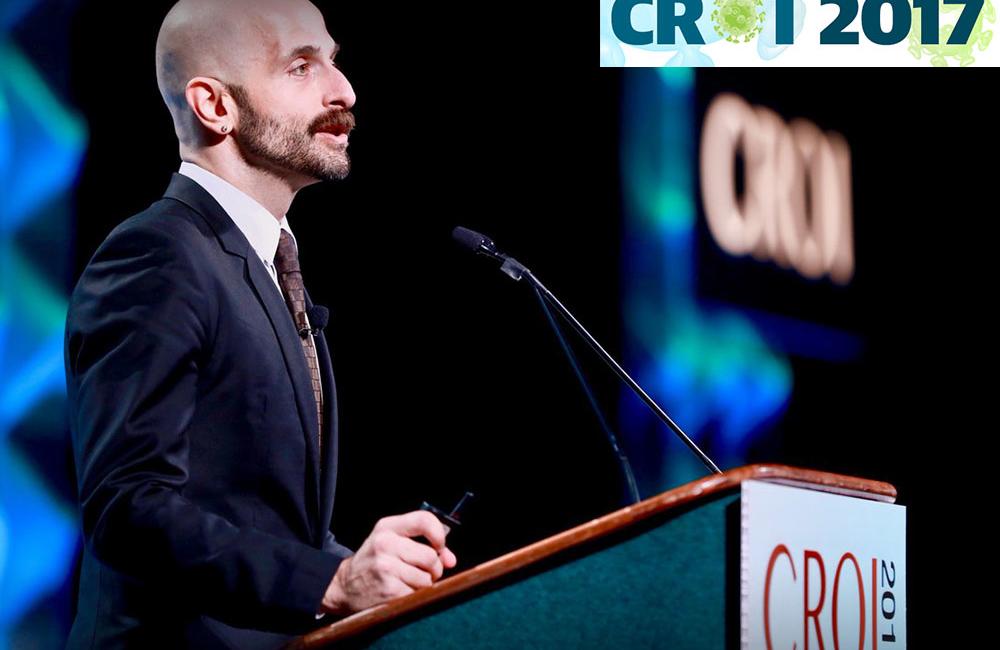
New York City’s strategy to end the HIV epidemic is firmly rooted in science, was developed in conjunction with community activists, and has support from top-level political leaders, Demetre Daskalakis told the 2017 Conference on Retroviruses and Opportunistic Infections (CROI) in Seattle this week.
“When you combine political will, biological interventions and harm reduction, you can get to zero,” he said.
Dr Daskalakis is an unusual public health figure: an infectious disease physician who has delivered testing and vaccination in sex clubs and describes himself as a “queer health warrior”. He is now the deputy commissioner for disease control in the New York City Department of Health and is the architect of the city’s “ending the epidemic” initiative.
The strategy places particular emphasis on identifying undiagnosed individuals and linking them to healthcare; retaining people in care to maximise virus suppression; and facilitating access to pre-exposure prophylaxis (PrEP). Mayor Bill de Blasio and Governor Andrew Cuomo have given political and budgetary support to the initiative, facilitating implementation by a range of government agencies.
New diagnoses are down from 3527 in 2010 to 2493 in 2015, and are projected to fall to 1350 in 2020. Estimates for incident infections are following a similar trajectory.
But substantial disparities remain – as well as those typically seen in relation to race, age and gender, over 80% of new diagnoses are in individuals who live in areas of high poverty.
“Health equity is the key to ending the epidemic in our jurisdiction,” Daskalakis said. Access to healthcare and housing support are important parts of the strategy.
And while there have only been modest reductions in diagnoses made in men who have sex with men (MSM) (who account for almost 60% of diagnoses), there have been successes in other populations. Annual diagnoses in injecting drug users have fallen from 343 a decade ago to 76 in 2015. In 2015 there were zero cases of mother-to-child HIV transmission in New York City.
The continuum of care is strong – of all people living with HIV, 94% are diagnosed, 86% are retained in care, 82% have been prescribed HIV treatment, and 74% have an undetectable viral load.
A focus of current work is to transform the city’s sexually transmitted disease clinics into ‘destination clinics’ that promote sexual health in a positive way. The development of such services is often neglected, but Daskalakis said that the NYC clinics are at the front line of HIV – 1 in 15 MSM diagnosed with a rectal sexually transmitted infection at a city clinic are diagnosed with HIV within a year and 1 in 42 MSM attending a city clinic are diagnosed with HIV within a year. Moreover, two-thirds of patients say they would consider starting PrEP and the clinics reach a demographically diverse group of patients.
Current services focus on diagnosing and treating infections, but the aspiration is to create more welcoming environments that offer a wider range of services. The clinics should be efficient gateways to post-exposure prophylaxis (PEP), PrEP and HIV treatment. Same day initiation for all these services is now offered, with social workers and benefits navigators coming behind to deal with insurance problems and underlying social issues. Contraception, HPV (human papillomavirus) vaccination, cervical screening and anal screening are all also offered.
Whereas the continuum of care (or treatment cascade) is usually thought to apply to people living with HIV and some researchers have proposed a continuum of care (or prevention cascade) in relation to PrEP, Daskalakis wanted to develop a continuum of care that applies both to HIV-negative and HIV-positive people.
His solution is a ‘status neutral’ prevention and treatment cycle (visible here) which suggests that the beginning of the process – for all – is HIV testing. People living with HIV need to be prescribed antiretroviral therapy and retained in high-quality care, which is understood to be an ongoing process. This contrasts with the typical treatment cascade, which treats achieving an undetectable viral load as a singular event that is the end-point of the continuum.
The other half of the cycle pictures engagement with prevention for those who test HIV negative and are at risk of HIV. The individual remains engaged with high-quality sexual health services in an ongoing manner, which is understood to facilitate awareness and use of PrEP.
A ‘status neutral’ approach treats people taking HIV treatment and people taking PrEP in the same way, in the same services, thus reducing stigma, Daskalakis said.
He finished his presentation with some advice for delegates. “Treat HIV like an emergency, because it is,” he said. “Dream big and take risks.”
Daskalakis DS If You Can Make It There: Ending The HIV Epidemic In New York. Conference on Retroviruses and Opportunistic Infections (CROI 2017), Seattle, presentation 108, 2017.
View the abstract on the conference website.
View a webcast of this presentation on the conference website.
